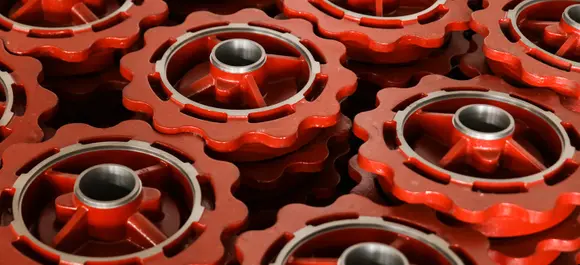Mobile:+86-311-808-126-83
Email:info@ydcastings.com
sand mould casting
Sand Mould Casting An Overview
Sand mould casting is one of the oldest and most versatile methods of metal casting. This process involves creating a mold from sand, which is then used to shape molten metal into desired forms. Renowned for its simplicity and effectiveness, sand casting has been a crucial technique in various industries, from automotive to aerospace, providing a cost-effective solution for manufacturing complex metal parts.
The Sand Mould Casting Process
The sand mould casting process begins with the preparation of the sand mixture, which typically consists of silica sand, clay, and water. The sand is selected for its ability to retain shape when compacted and to withstand the heat of molten metal. The mixture is then shaped into a mold by packing it tightly around a pattern, which is a replica of the final product. Patterns can be made from various materials, including metal, wood, or plastic, and can be either solid or hollow, depending on the design requirements.
Once the mold is created, it is carefully removed from the pattern, leaving a void in the shape of the desired metal piece. The two halves of the mold are then assembled, and channels are created for pouring the molten metal into the cavity. After thorough inspections to ensure there are no defects, the mold is ready for the casting process.
Next, molten metal, which can be made from various materials such as aluminum, iron, or bronze, is poured into the mold through the designated channels. The metal fills the void, taking the shape of the mold. Once the metal cools and solidifies, the mold is broken apart, and the newly formed cast part is removed.
Advantages and Applications
sand mould casting

One of the primary advantages of sand mould casting is its flexibility. It allows for the production of complex geometries and large components that would be difficult or impossible to create using other manufacturing methods. Furthermore, the process can accommodate a wide variety of metals, making it suitable for numerous applications.
Sand casting is particularly prevalent in the automotive industry, where it is utilized for producing engine blocks, transmission housings, and other critical components. The ability to produce large quantities of parts at a relatively low cost makes sand casting an attractive option for mass production. Beyond automotive applications, it also finds use in manufacturing machinery parts, art sculptures, and even jewelry.
Challenges in Sand Mould Casting
While sand mould casting boasts numerous advantages, it is not without its challenges. The quality of the final product can be influenced by various factors, including the quality of the sand mixture, the patterns used, and the temperature of the molten metal. Issues such as sand inclusions, porosity, and dimensional inaccuracies can arise, necessitating careful control and monitoring throughout the process.
Additionally, the disposal and environmental impact of sand casting have become significant concerns in recent years. The used sand can accumulate and lead to waste management challenges. As a result, many manufacturers are exploring ways to recycle sand or replace it with more sustainable materials, driving ongoing developments in the industry.
Conclusion
In conclusion, sand mould casting remains a fundamental technique in metalworking and manufacturing, providing an effective method for creating complex and large-scale components. Its historical significance and continued relevance highlight the importance of this process across various industries. Despite facing challenges, advancements in technology and materials are paving the way for a more sustainable future in sand casting, ensuring its place in modern manufacturing for years to come. As industries continue to innovate, the principles of sand mould casting will undoubtedly evolve, adapting to meet the demands of a changing market while retaining its essential characteristics that have stood the test of time.
-
Impeller Technology That Powers Precision in Pump SystemsNewsMay.22,2025
-
Valve Durability Begins with Quality Cast Iron ComponentsNewsMay.22,2025
-
Performance Cooling with Advanced Automobile Water Pump SolutionsNewsMay.22,2025
-
How Motor Housing and Oil Pans Shape Engine PerformanceNewsMay.22,2025
-
How Metal Castings Drive Modern Manufacturing EfficiencyNewsMay.22,2025
-
Exploring the Engineering Behind Valve Body CastingsNewsMay.22,2025











